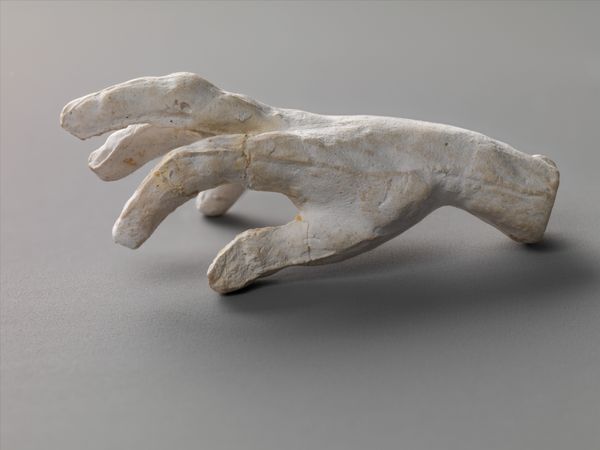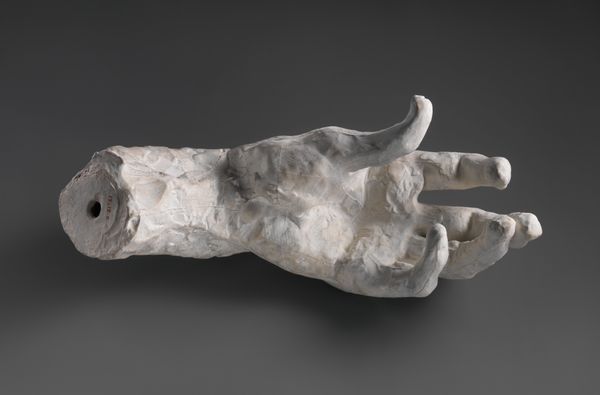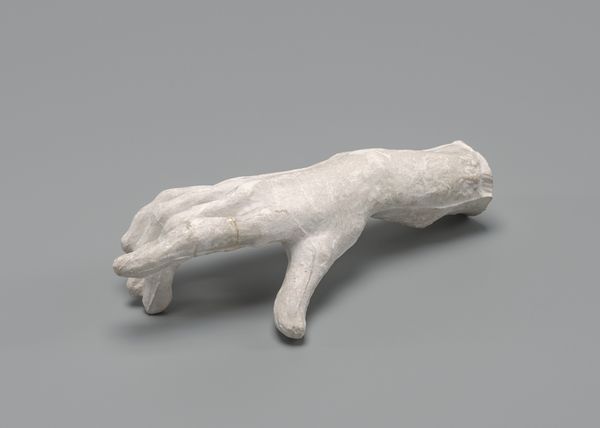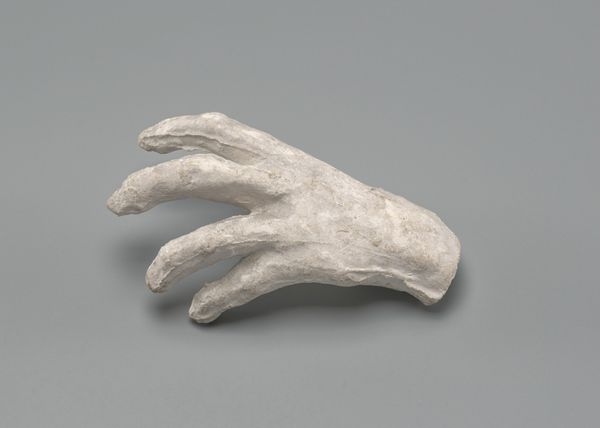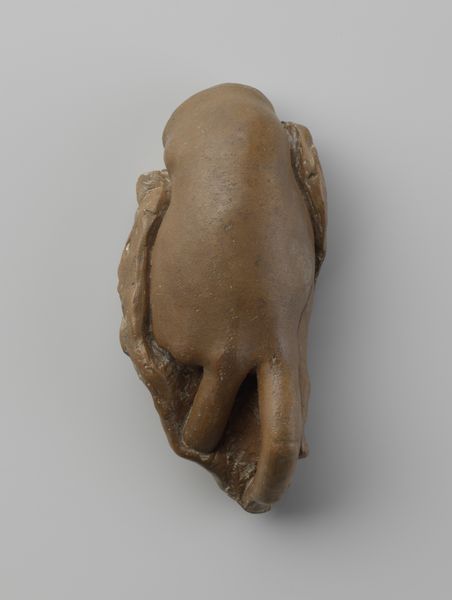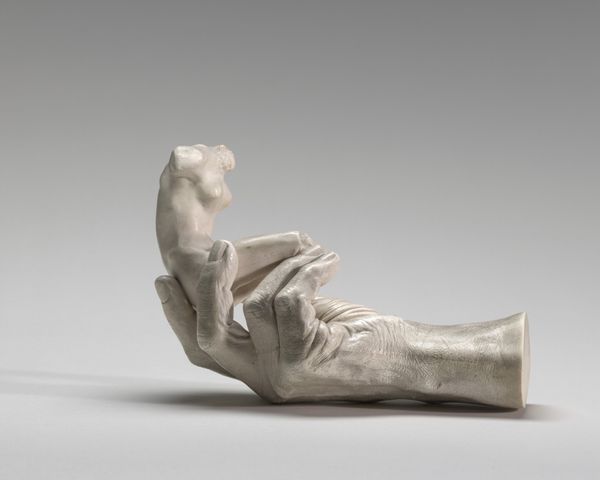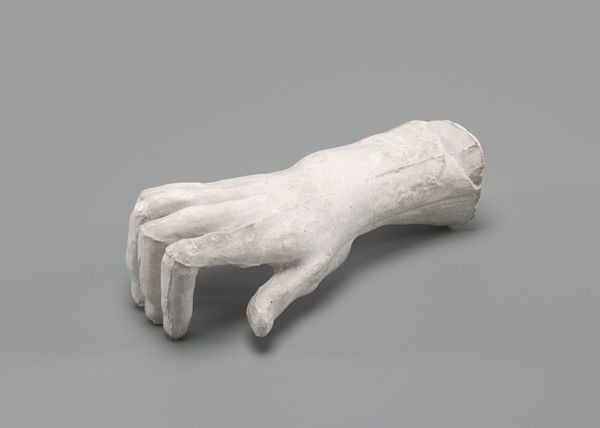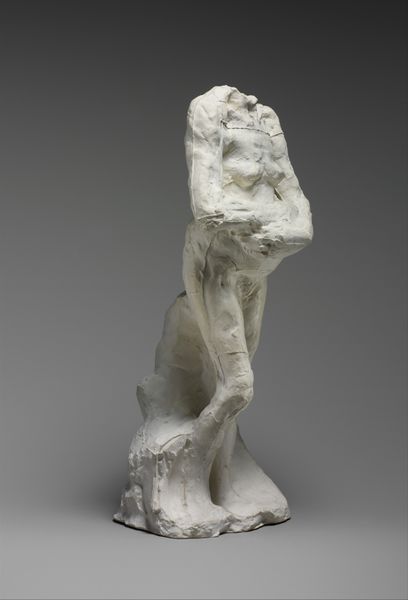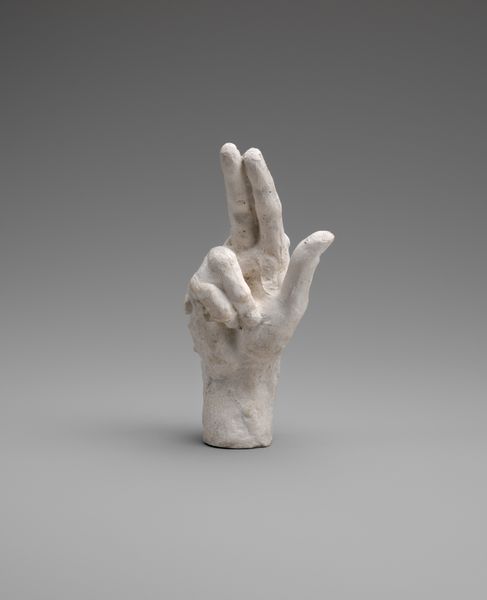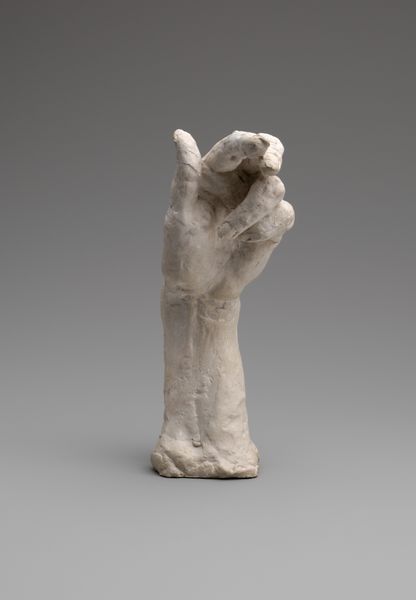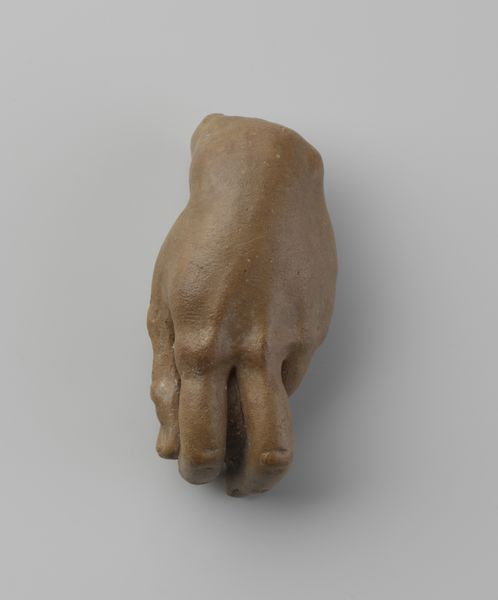
sculpture, marble
#
portrait
#
figuration
#
classicism
#
sculpture
#
decorative-art
#
marble
Dimensions: Length: 2 3/8 in. (6 cm)
Copyright: Public Domain
This small plaster study of a hand was created by Auguste Rodin, probably in France. The way it was made has everything to do with its character. Rodin was above all a modeler. He built up his forms in soft material, usually clay, adding and subtracting as he went. This approach is very different from carving, where material is taken away from a mass. Plaster was often used as an intermediary step; it allowed sculptors to preserve a clay model, which could dry out and crack. But plaster also has a quality all its own. It is matte, absorbent, and picks up even the finest details. You can really sense the pressure of Rodin’s fingers in this study. In a larger workshop context, plaster could also be used to make multiple copies of a sculpture in bronze or marble, which were themselves highly valued. But in this case, the study is an end in itself. It captures a fleeting moment of creative energy, still alive in the artist's chosen material.
Comments
No comments
Be the first to comment and join the conversation on the ultimate creative platform.
